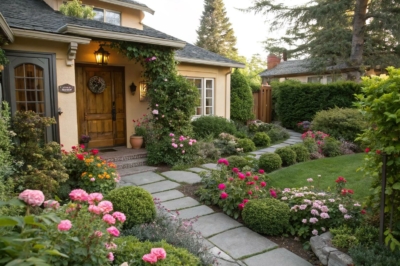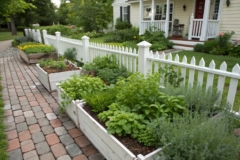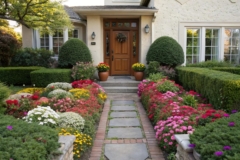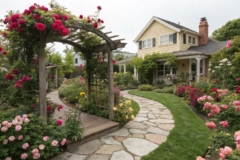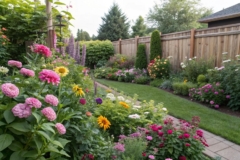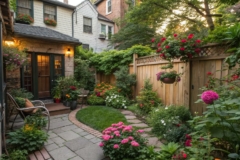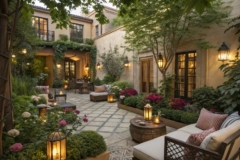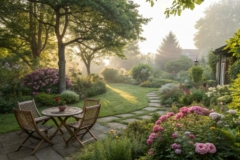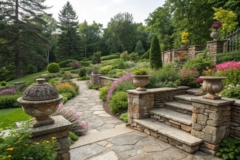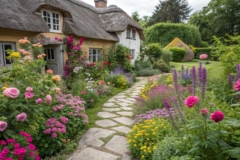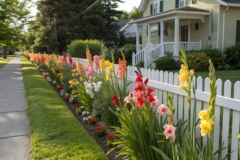1. Install Simple Lighting
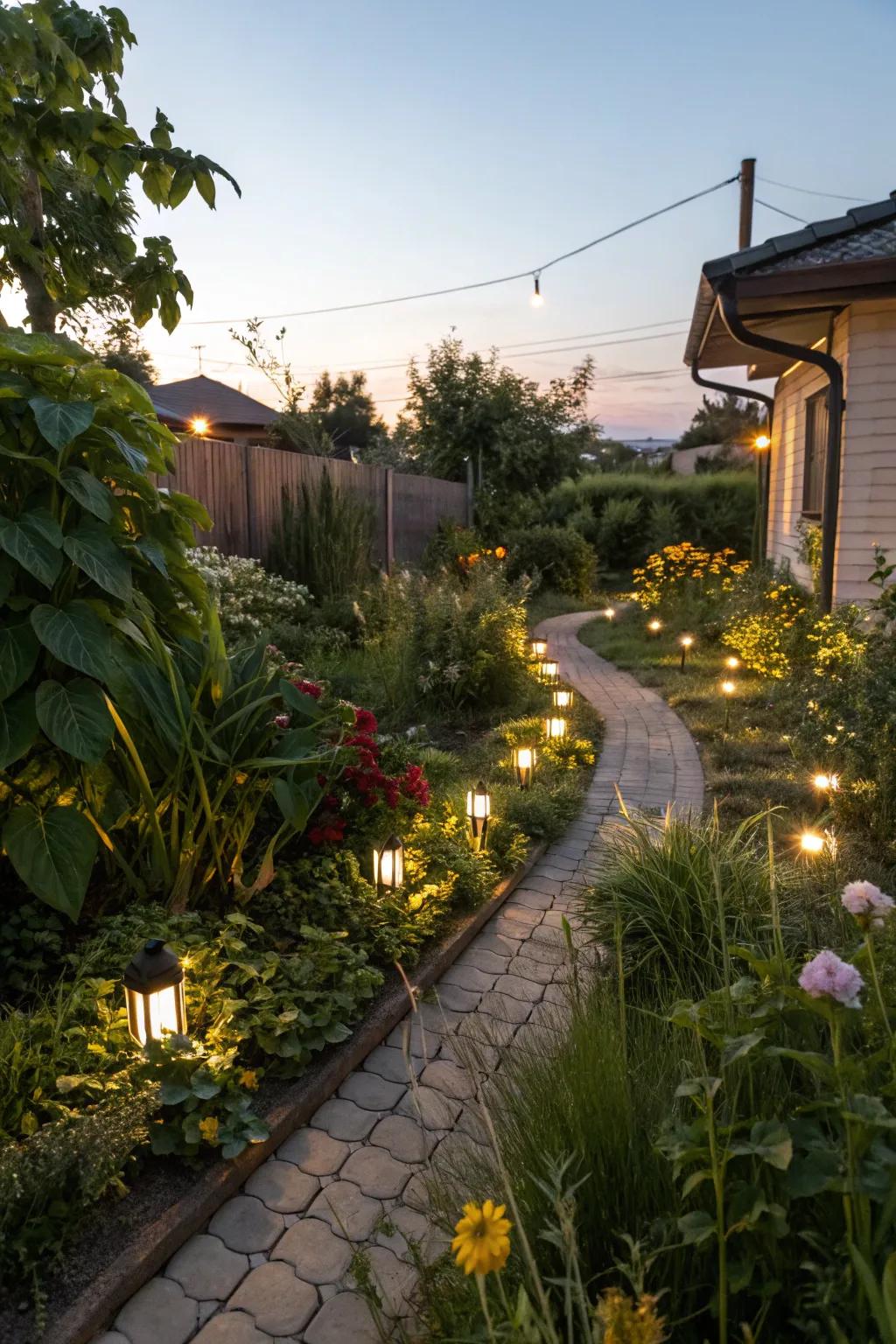
Lighting can transform a garden into a magical space at night. I use solar-powered lights to highlight paths and special plants.
Check if these fit your needs:
- Solar-Powered Garden Pathway Lights: Illuminate your pathways effortlessly with solar-powered lights, enhancing your garden’s beauty at night.
- Outdoor LED String Lights: Create a cozy ambiance with LED string lights that are perfect for garden decorations.
- Solar Spotlights for Plant Highlights: Highlight special plants in your garden with adjustable solar spotlights for a stunning visual impact.
2. Maximize Vertical Space
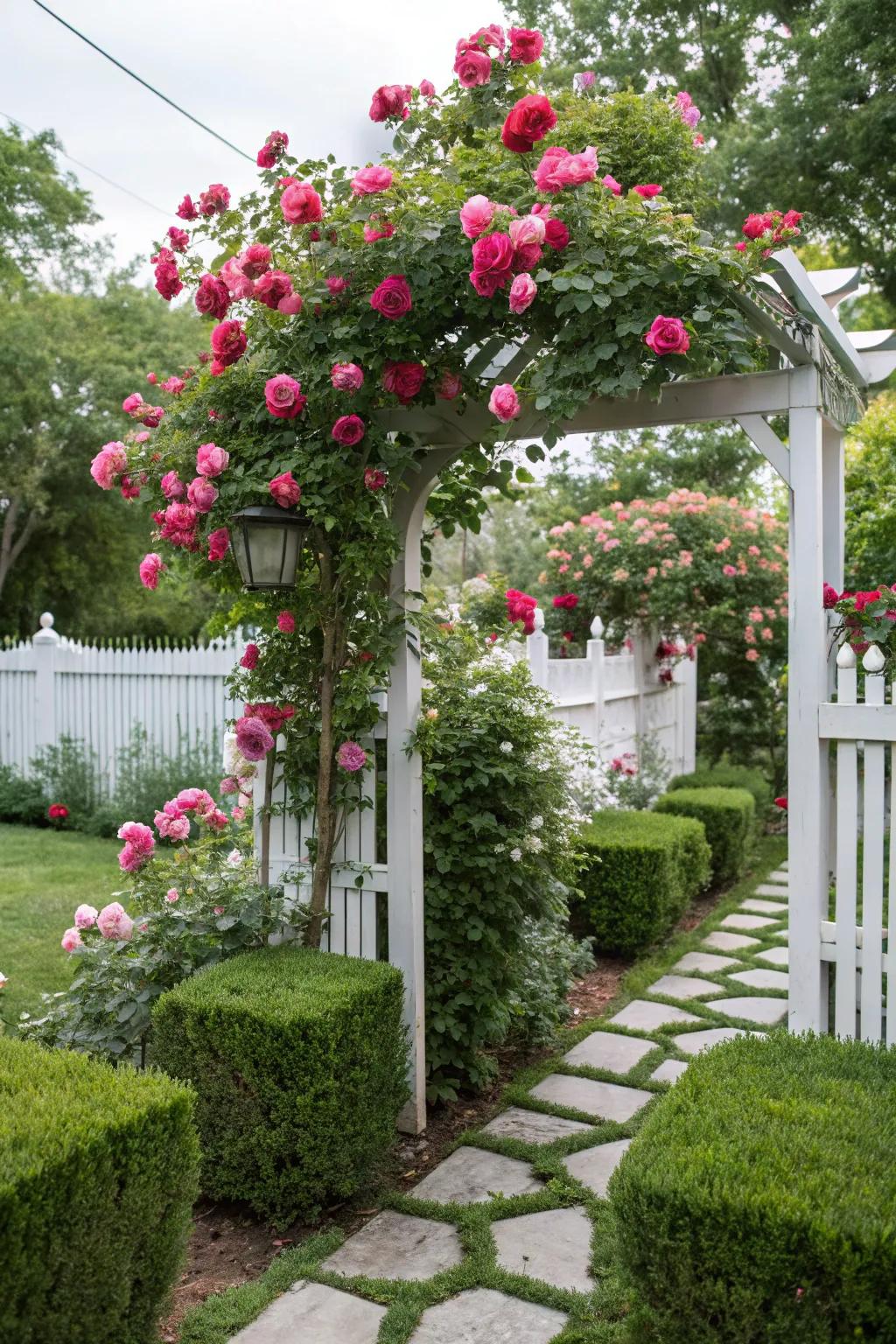
Utilizing vertical elements like trellises can save space and add height. My garden trellis supports climbing roses that charm with every bloom.
Explore these options:
- Garden Trellis for Climbing Plants: Enhance your garden’s beauty with a sturdy trellis for climbing roses and lush greenery.
- Decorative Garden Arch: Create a stunning entrance with an elegant garden arch for climbing flowers and vines.
- Wall-mounted Trellis Set: Save space and add height with a stylish wall-mounted trellis for vertical gardening.
3. Create a Succulent Border
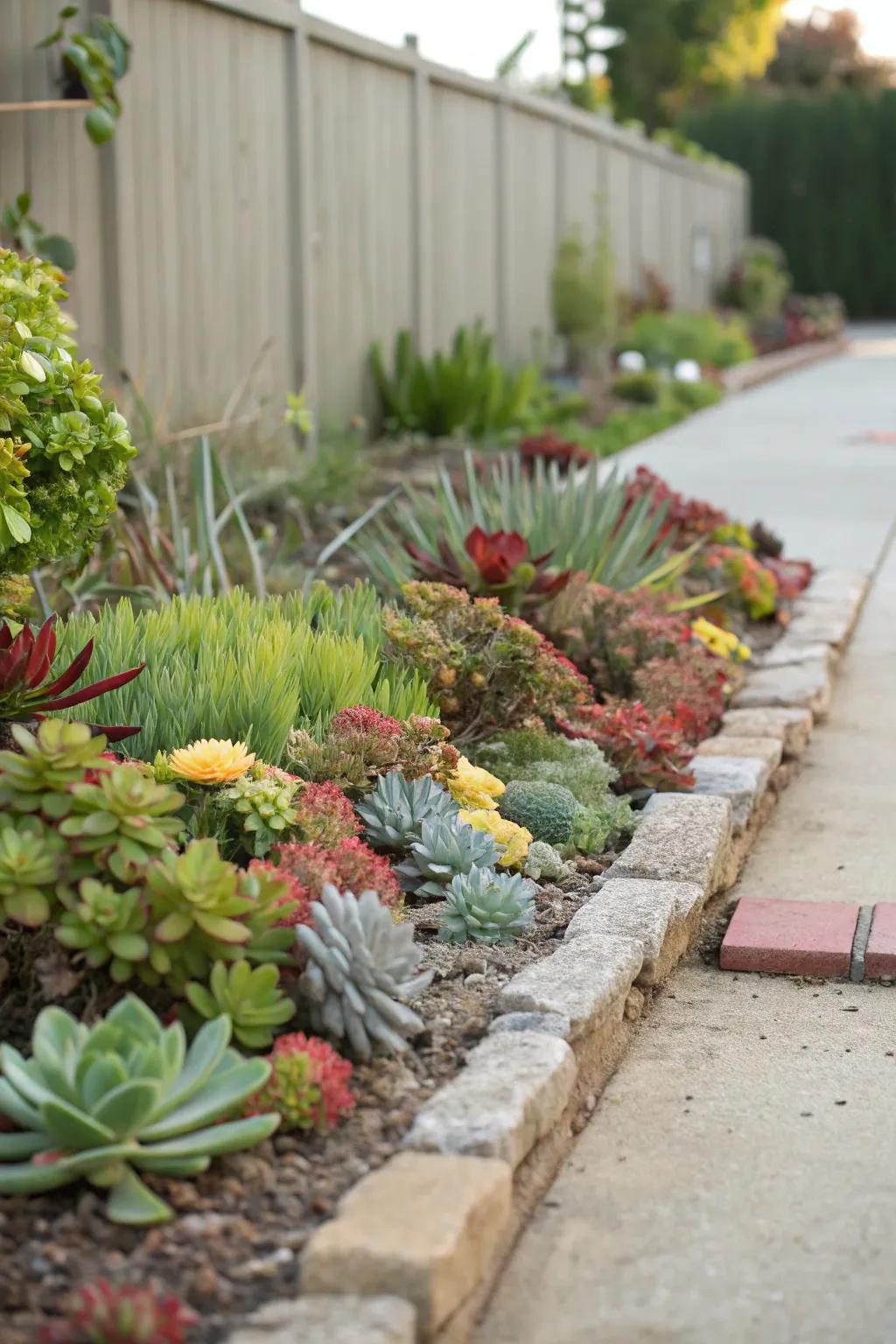
Succulents are low-maintenance and can form beautiful borders. I love using them for their unique shapes and drought tolerance.
Products that could assist:
- Assorted Succulent Plant Pack: Enhance your garden with these unique, low-maintenance succulents. Perfect for creating stunning borders.
- Garden Edging Stone Kit: Define your succulent border beautifully with easy-install garden edging stones. Adds an elegant touch.
- Well-Draining Potting Soil for Succulents: Ensure optimal growth with this specially formulated, well-draining soil ideal for succulents.
4. Utilize Containers for Flexibility
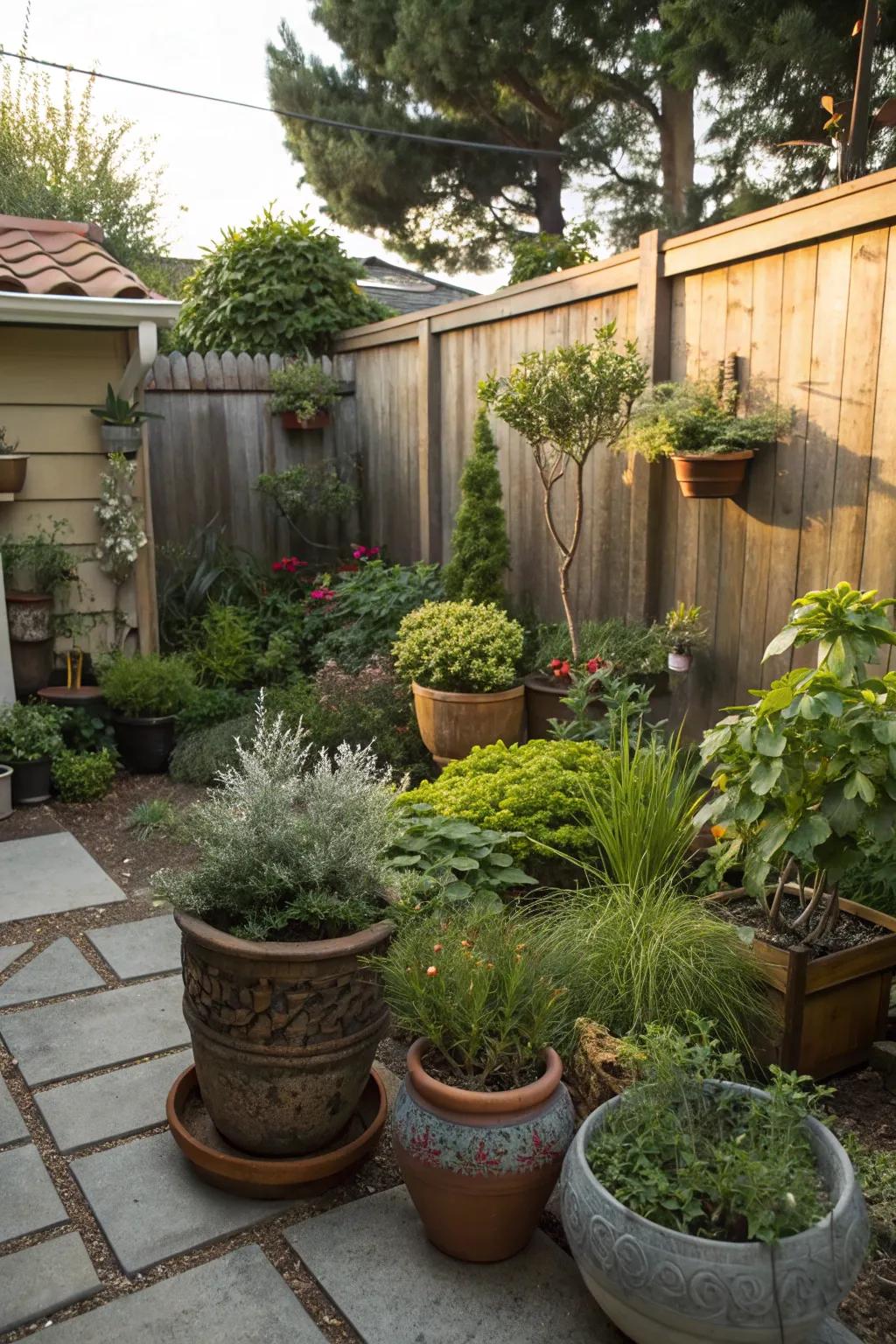
Potted plants are a lifesaver in small gardens, offering flexibility and variety. I love mixing pots of different sizes for a dynamic look.
Useful items to consider:
- Ceramic Flower Pots Set: Mix and match ceramic pots to add texture and color to your garden collection.
- Tall Planters for Trees: Use tall planters to create height and dimension in your small garden space.
- Hanging Wall Planters: Maximize vertical space with hanging wall planters for a stylish and efficient garden.
5. Use Mirrors to Enlarge the Space
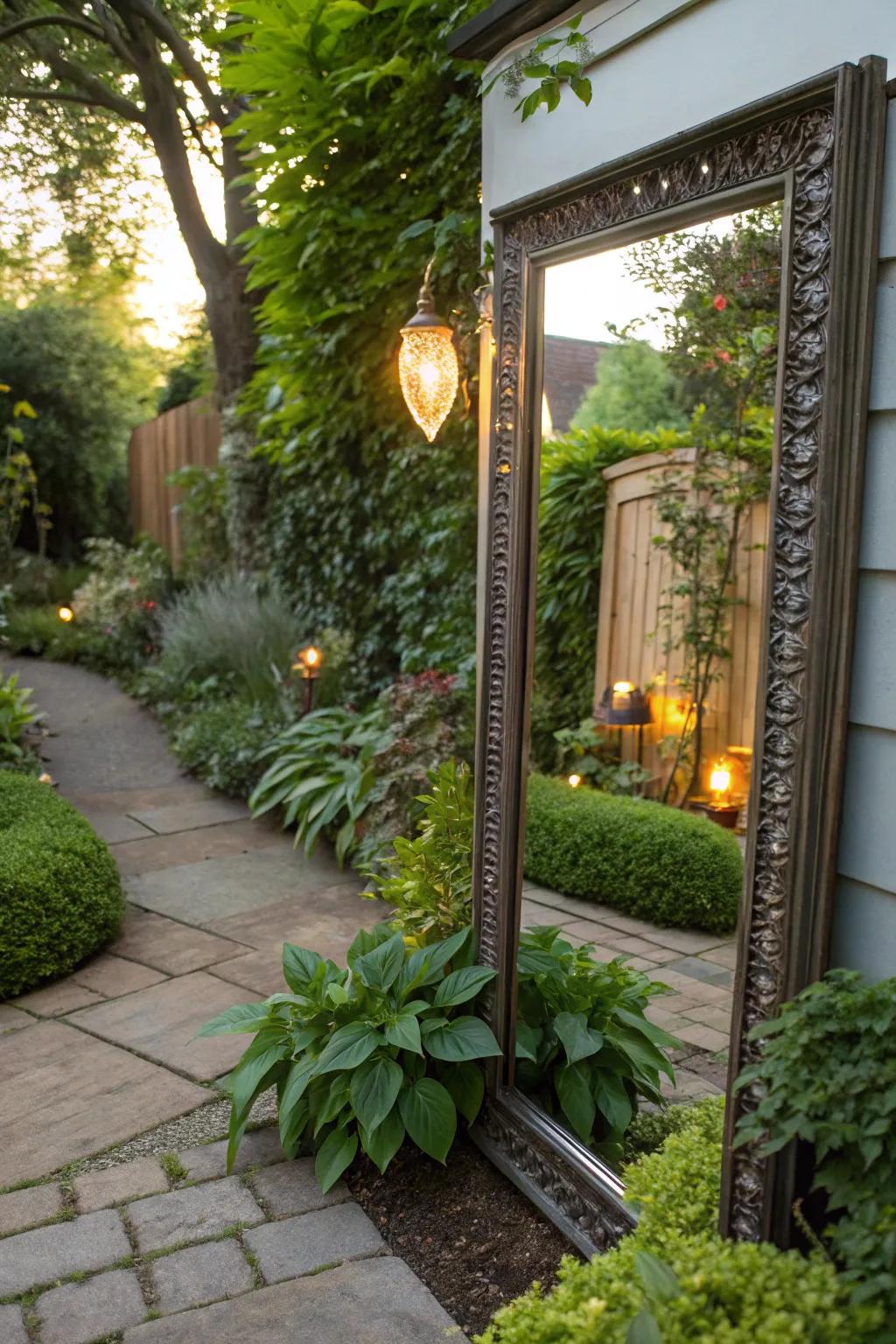
Mirrors can cleverly create the illusion of a larger garden. I like placing them behind plants to reflect greenery and light.
Check these products out:
- Outdoor Decorative Mirror: Enhance your garden’s look by reflecting greenery and adding depth with a stylish outdoor mirror.
- Weatherproof Framed Mirror: Create a charming focal point that visually expands your garden with this weatherproof framed mirror.
- Large Wall Hanging Mirror: Opt for a large wall mirror to reflect more light and give your garden a spacious feel.
6. Add a Touch of Whimsy
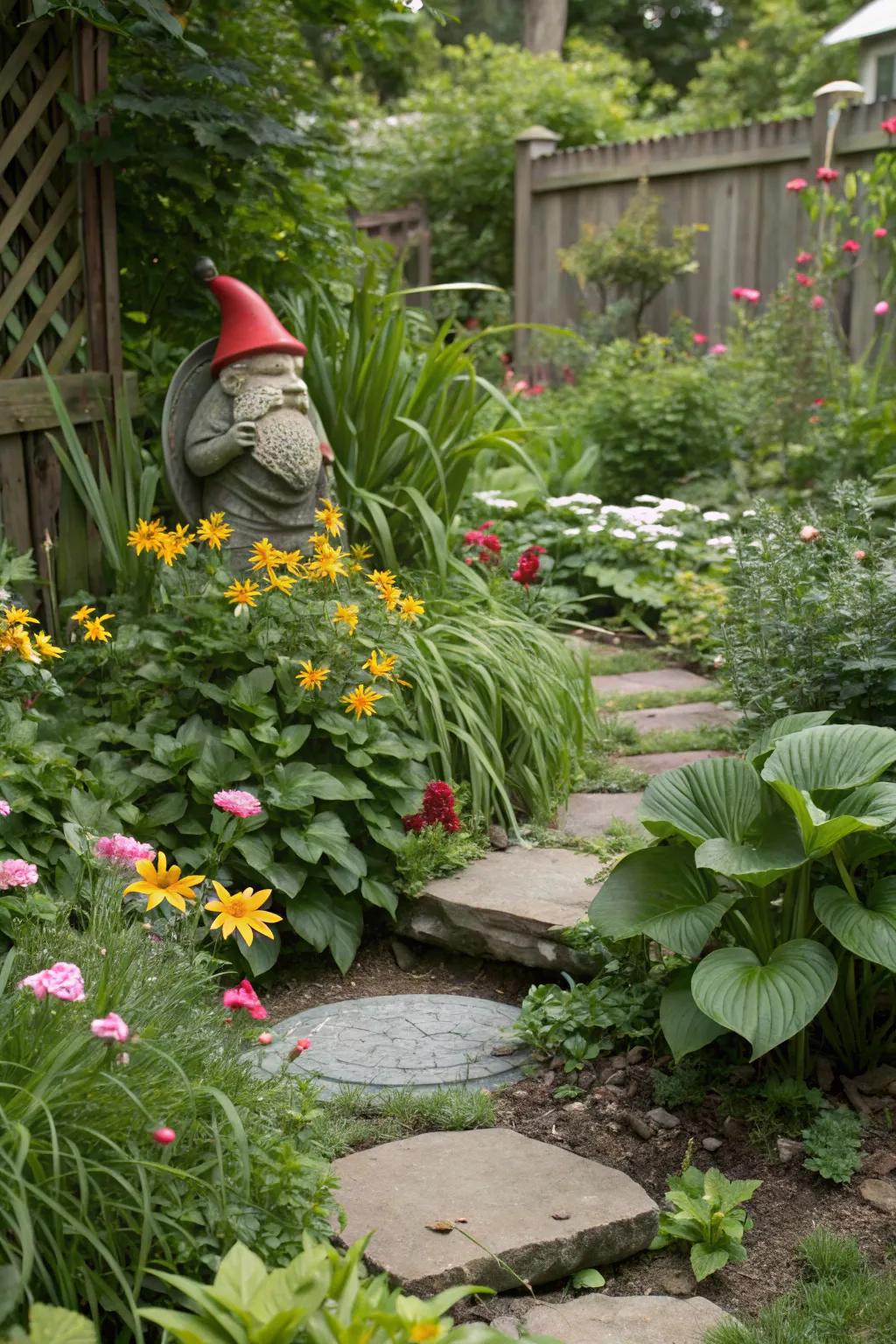
Incorporate whimsical elements like gnomes or playful signs for personality. My garden’s gnome peeking from behind the ferns never fails to make me smile.
Might be a good match:
- Garden Gnome Statue: Add charm to your garden with a cute gnome, sparking joy in every glance.
- Whimsical Garden Sign: Inject fun into your space with a playful garden sign that makes visitors smile.
- Decorative Garden Fairies: Enchant your garden by placing delightful fairy ornaments among your flowers.
7. Incorporate Ground Cover
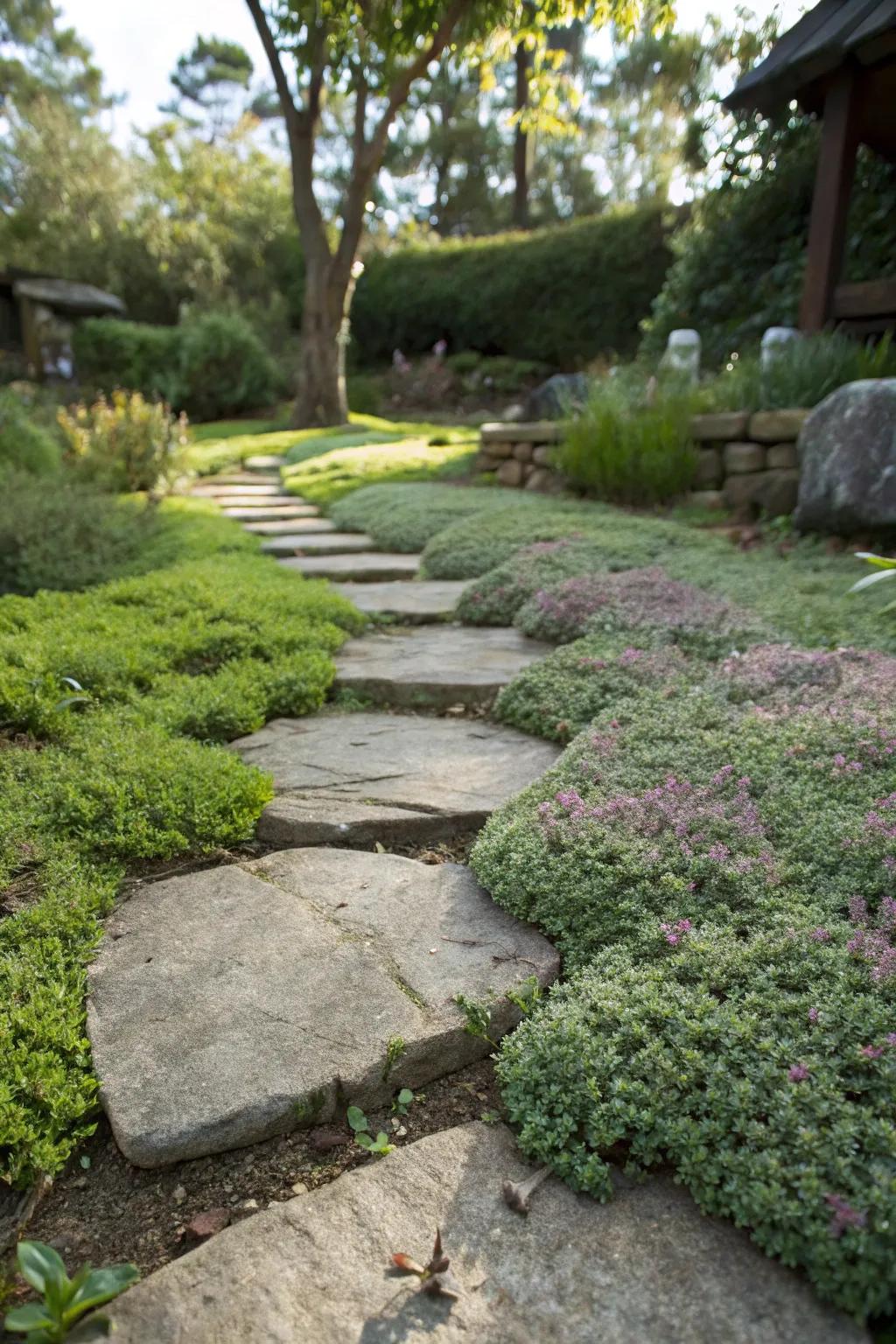
Using ground covers can make a small space feel lush and full. I adore planting creeping thyme between stepping stones for a fragrant, soft touch.
Possibly handy products:
- Creeping Thyme Seeds: Plant creeping thyme for a lush, aromatic ground cover between your garden stepping stones.
- Stepping Stones for Garden: Enhance your garden’s pathways with natural stone stepping stones for an elegant look.
- Organic Soil for Ground Cover: Prepare your garden with nutrient-rich organic soil, perfect for ground cover planting.
8. Install a Miniature Water Feature

A small water feature can add tranquility and interest. In my garden, a tiny fountain provides a soothing background sound.
You might give these a try:
- Compact Solar-Powered Water Fountain: Enhance relaxation with a solar-powered fountain that gently adds ambiance to your garden.
- Decorative Tiered Mini Fountain: Introduce charming elegance with a tiered fountain to create a soothing garden retreat.
- Ceramic Birdbath Fountain: Invite nature by adding a ceramic fountain, perfect for attracting birds to your garden.
9. Craft a Vertical Garden

Vertical gardens are perfect for adding greenery without using ground space. I enjoy creating living walls with herbs and succulents for fresh flavors and textures.
A few suggestions:
- Wall-Mounted Planter System: Easily install a wall-mounted planter to create a stunning vertical green space at home.
- Herb and Succulent Seed Starter Kit: Start your vertical garden effortlessly with a beginner-friendly herb and succulent seed kit.
- Automatic Drip Irrigation Kit: Keep your vertical garden lush and vibrant with an easy-to-use drip irrigation system.
10. Define Clean Edges
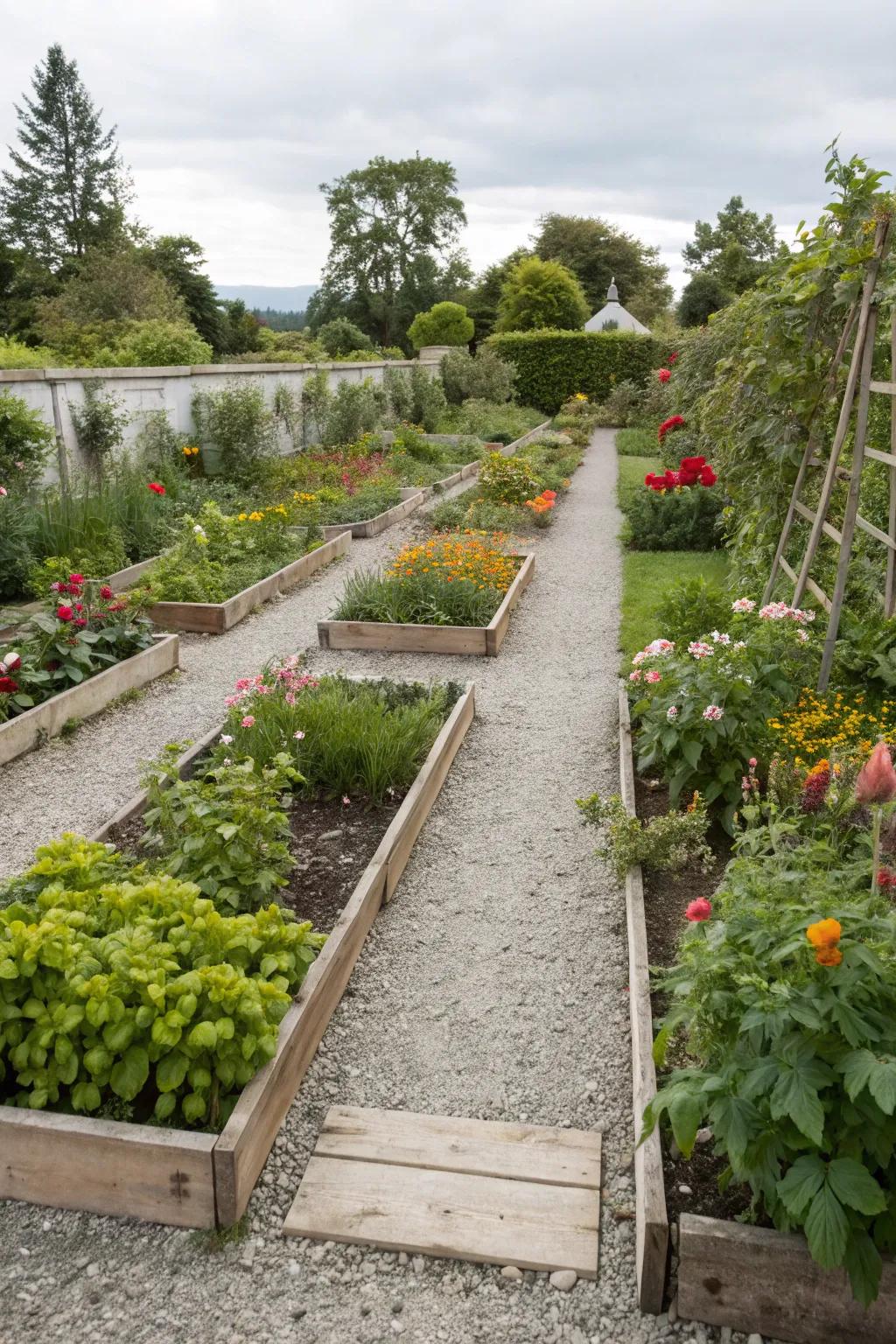
Defined edges give a polished look to any garden. I use brick or metal borders to separate plant areas from pathways.
Maybe worth checking out:
- Metal Garden Edging Kit: Enhance your garden’s look with sturdy metal borders that define planting areas stylishly.
- Brick Border Edging: Add classic charm to your garden with durable brick edging for clean separation.
- Wooden Raised Garden Bed Set: Elevate your garden’s appearance with easy-to-install wooden raised bed frames.
11. Add a Focal Point
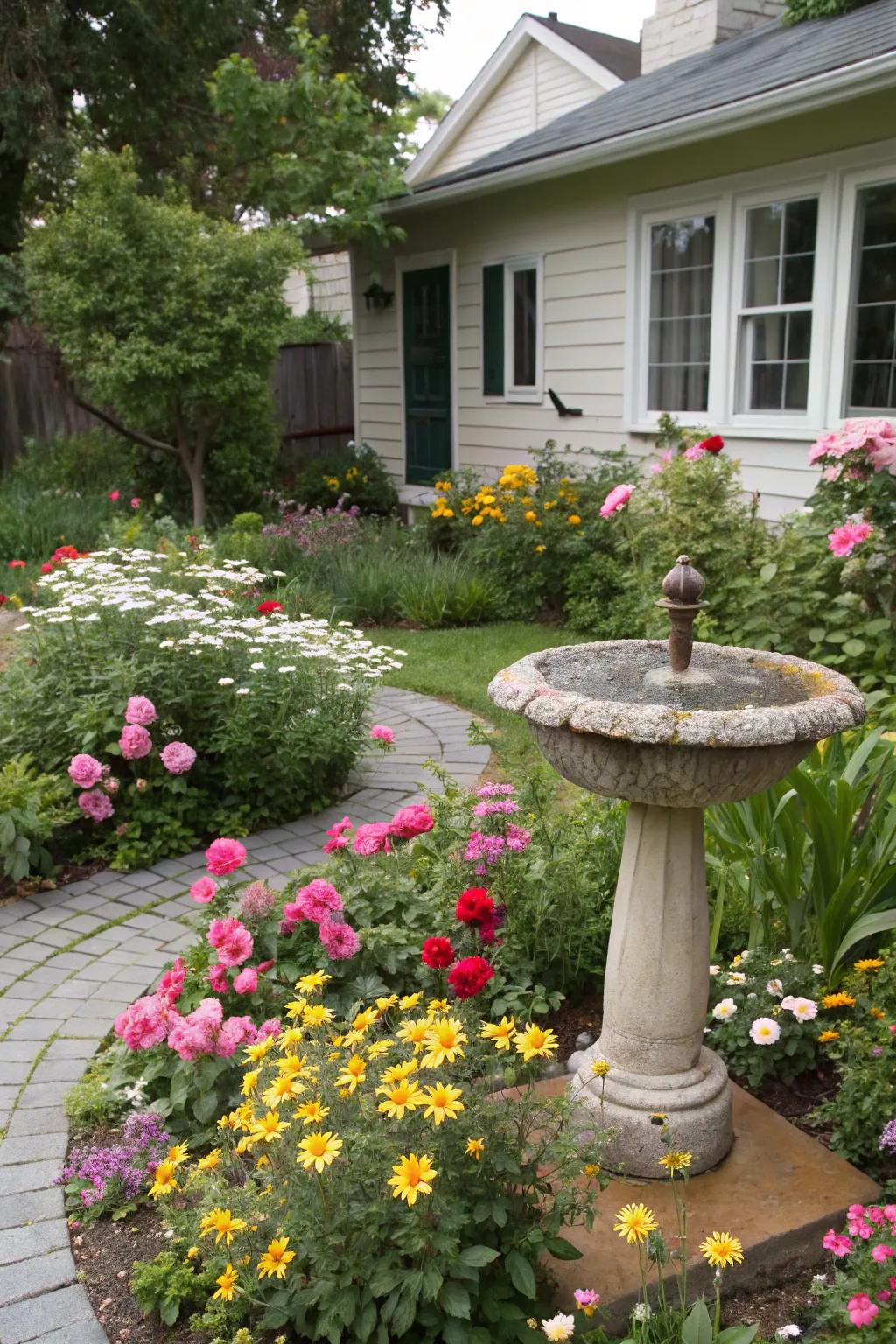
A focal point like a sculpture or a unique plant draws attention and creates a sense of cohesion. My favorite piece is a vintage birdbath surrounded by blooms.
These products might be useful:
- Vintage Birdbath: Enhance your garden’s charm with a vintage birdbath, inviting beauty and tranquility to your space.
- Garden Sculpture: Introduce elegance with a distinctive garden sculpture, creating an eye-catching outdoor centerpiece.
- Unique Plant Variety: Dazzle guests with a unique plant variety, adding texture and interest to your garden layout.
12. Achieve Symmetry and Balance
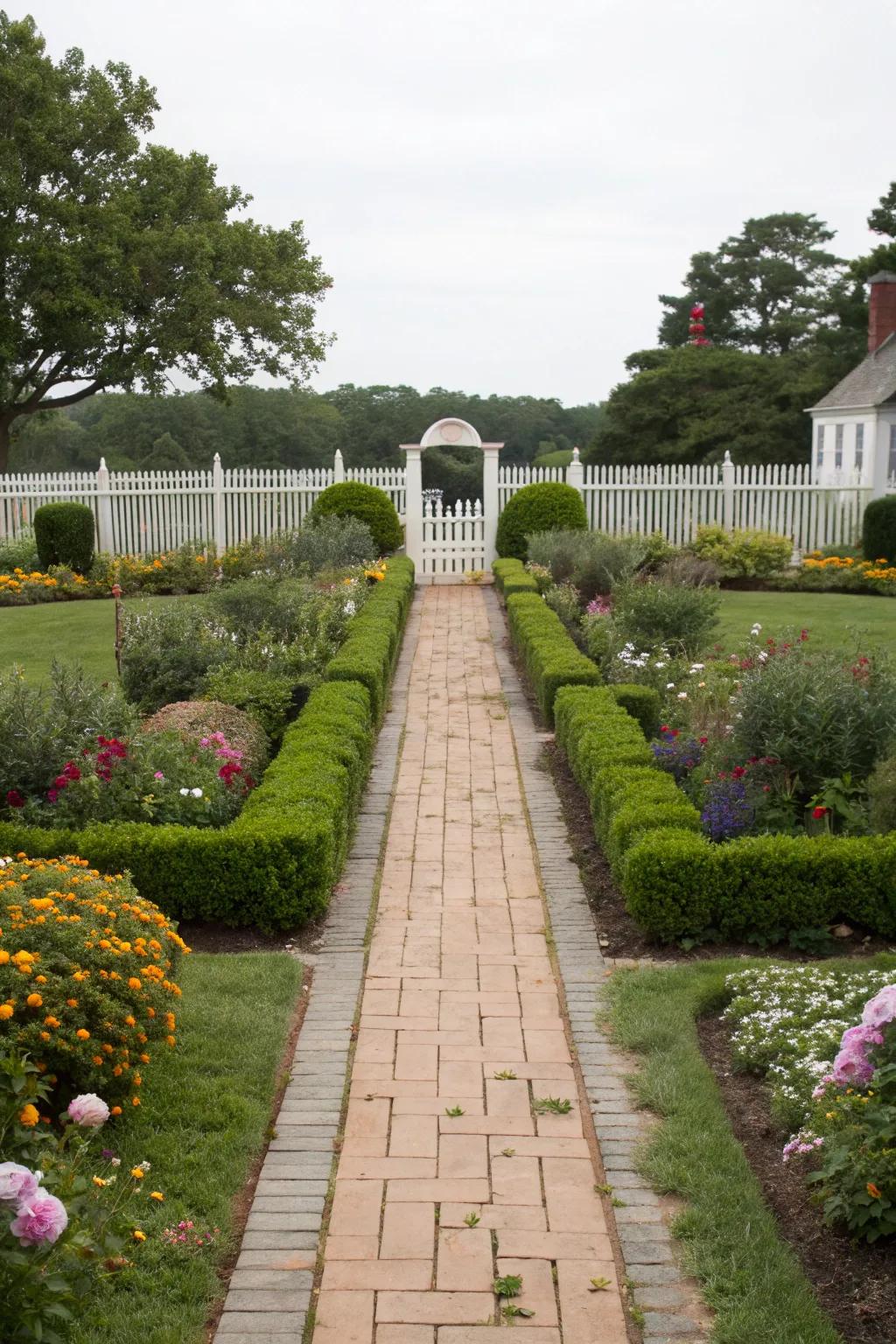
Symmetrical plantings can make a small garden feel elegant and balanced. I find that framing a path with matching planters creates a welcoming entrance.
Items that may come in handy:
- Matching Outdoor Planters: Transform your path with matching planters to create an elegant, welcoming entrance.
- Hedge Trimmers: Maintain symmetry by trimming hedges neatly for a polished garden appearance.
- Garden Path Lights: Illuminate your pathway symmetrically with stylish garden lights for an inviting look.
13. Experiment with Layered Planting

Using plants of varying heights creates depth and interest. I often combine tall grasses with shorter blooms to achieve a lush, layered look.
May just do the trick:
- Tall Ornamental Grasses Seeds: Add height and movement to your garden with these graceful tall ornamental grasses.
- Mixed Perennial Flower Seeds: Brighten your space with a variety of perennial blooms for continuous color throughout the seasons.
- Garden Edging Stones: Define your garden with durable edging stones for a neat, organized look.
14. Grow Edible Plants
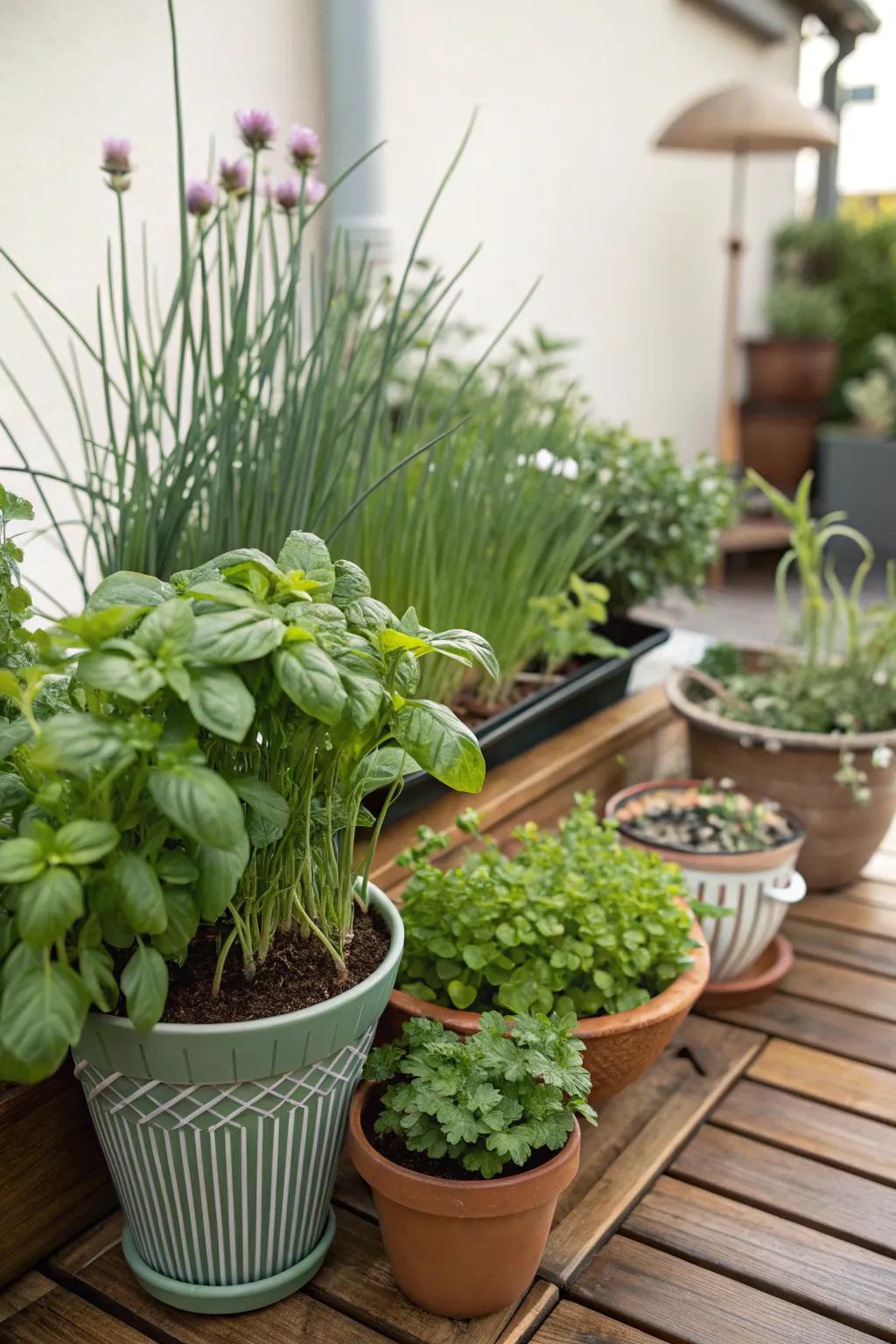
Even a small front garden can be productive with edible plants. I grow herbs like basil and chives in pots for easy access and fresh flavors.
Some handy options:
- Herb Garden Starter Kit: Start your own thriving herb garden with this beginner-friendly kit. Perfect for any small space.
- Self-Watering Planters: Keep your herbs hydrated with minimal effort using convenient self-watering planters.
- Organic Herb Seeds Pack: Grow a variety of fresh herbs with this organic seed pack for delicious home-grown flavors.
15. Install a Meandering Pathway
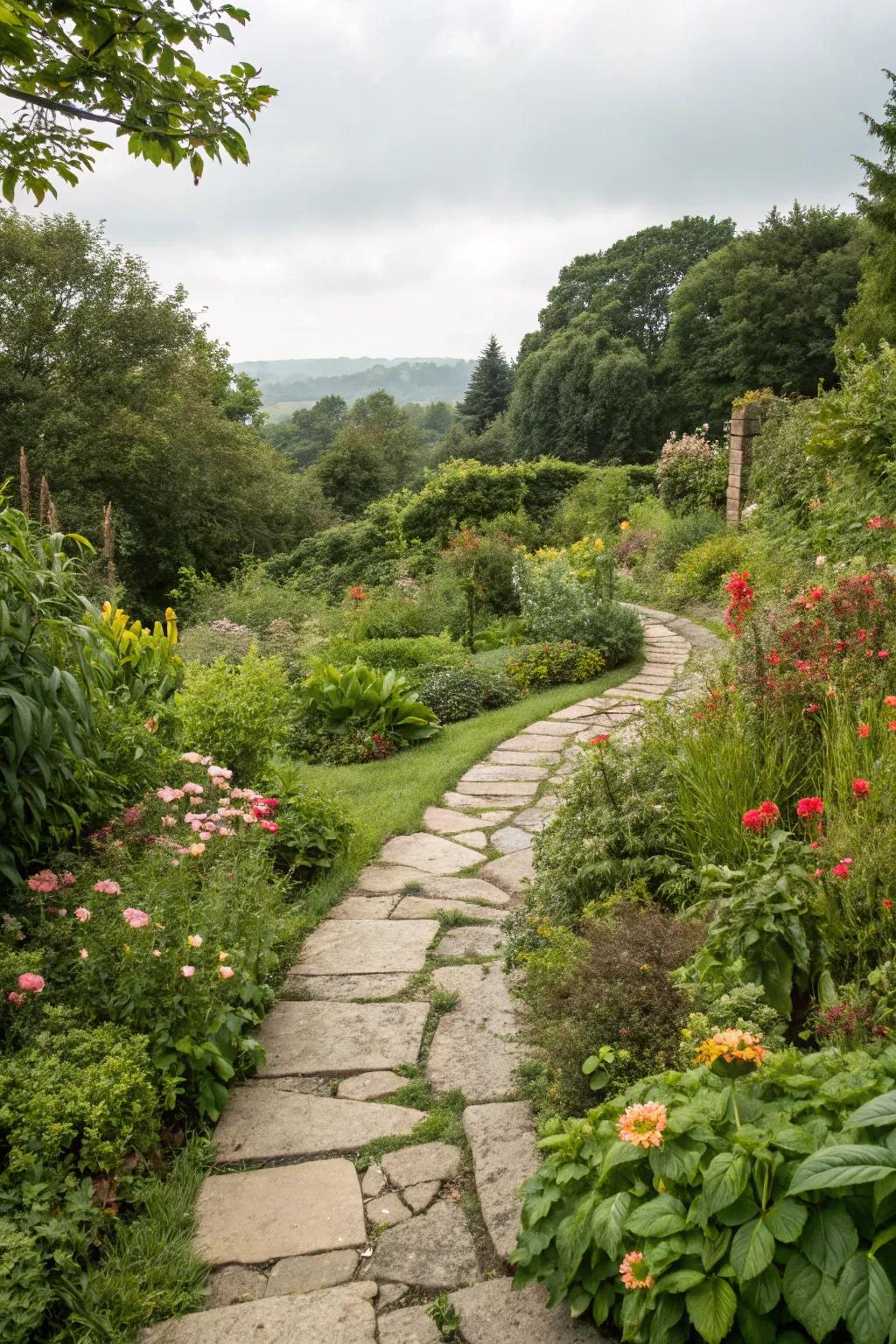
Use stone or brick pathways to guide the eye and make your garden feel larger. In my garden, a winding path adds a sense of mystery and discovery.
A few helpful options:
- Natural Stone Pathway Pavers: Enhance your garden’s charm with natural stone pavers for a rustic, inviting path.
- Brick Garden Pathway Kit: Create an elegant, winding path with durable brick pathway kits for your small garden.
- Garden Path Stepping Stones: Add whimsical appeal to your garden with assorted stepping stones for a unique pathway.
16. Create a Cozy Seating Nook
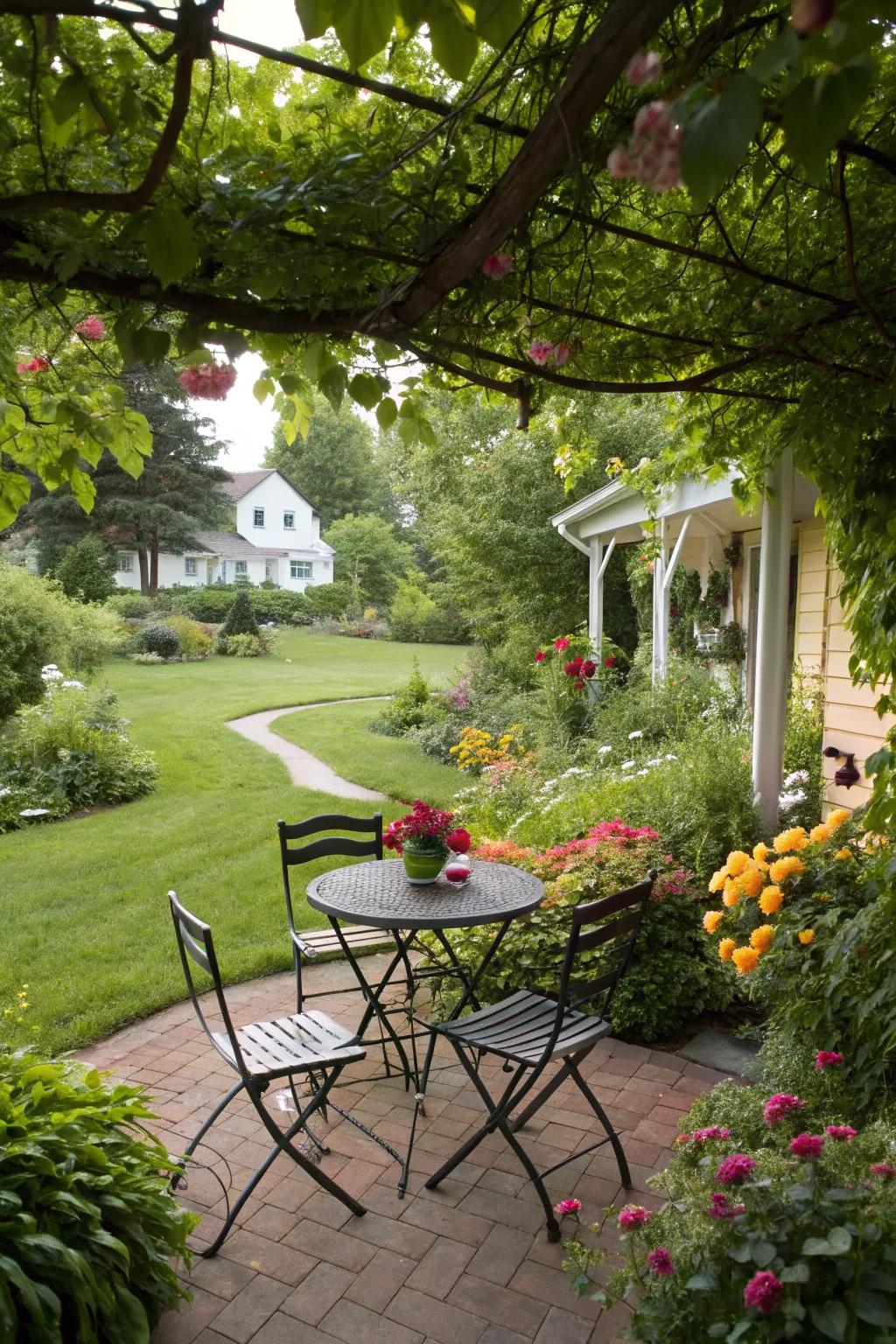
Even in a tiny garden, a small bistro set can offer a cozy spot to sip your morning coffee. I love how a couple of chairs and a compact table can transform a space into a personal retreat.
You might like:
- Compact Bistro Set: Transform your garden with a stylish bistro set perfect for relaxing coffee mornings.
- Outdoor Cushion Set: Add comfort and color to your chairs with weather-resistant outdoor cushions.
- Solar-Powered Garden Lights: Illuminate your seating nook with eco-friendly solar lights for evening ambiance.
17. Blend Greenery with Bold Colors
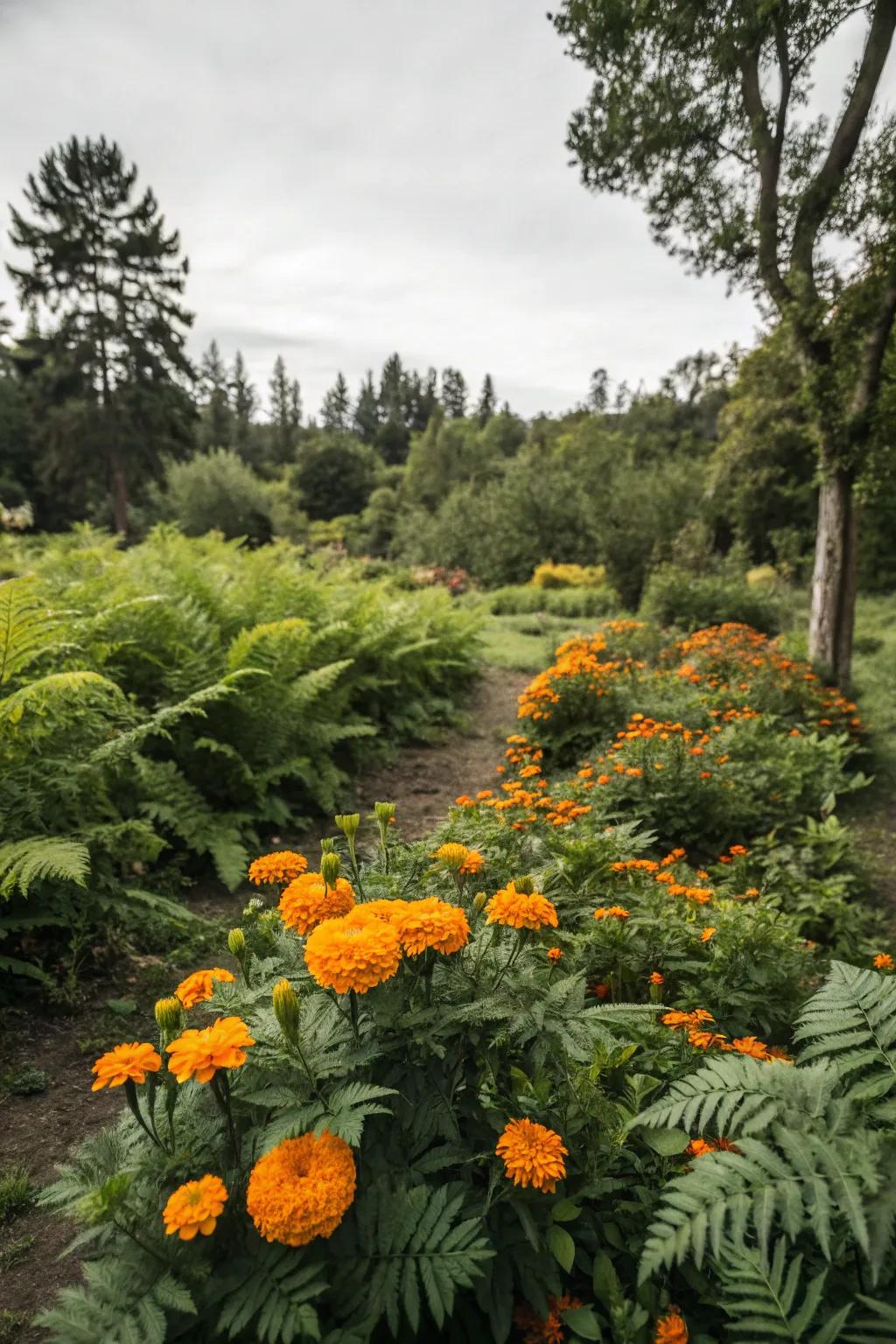
Combine bold flowers with lush greenery to create a vibrant contrast. In my garden, bright marigolds against ferns make a stunning display.
Try these:
- Marigold Flower Seeds: Plant vibrant marigolds to add eye-catching color and attract pollinators to your garden.
- Fern Plants: Introduce lush ferns for a rich green backdrop, enhancing depth and contrast in your garden.
- Flower Fertilizer: Boost growth and blooms in your floral display with this easy-to-use garden fertilizer.
